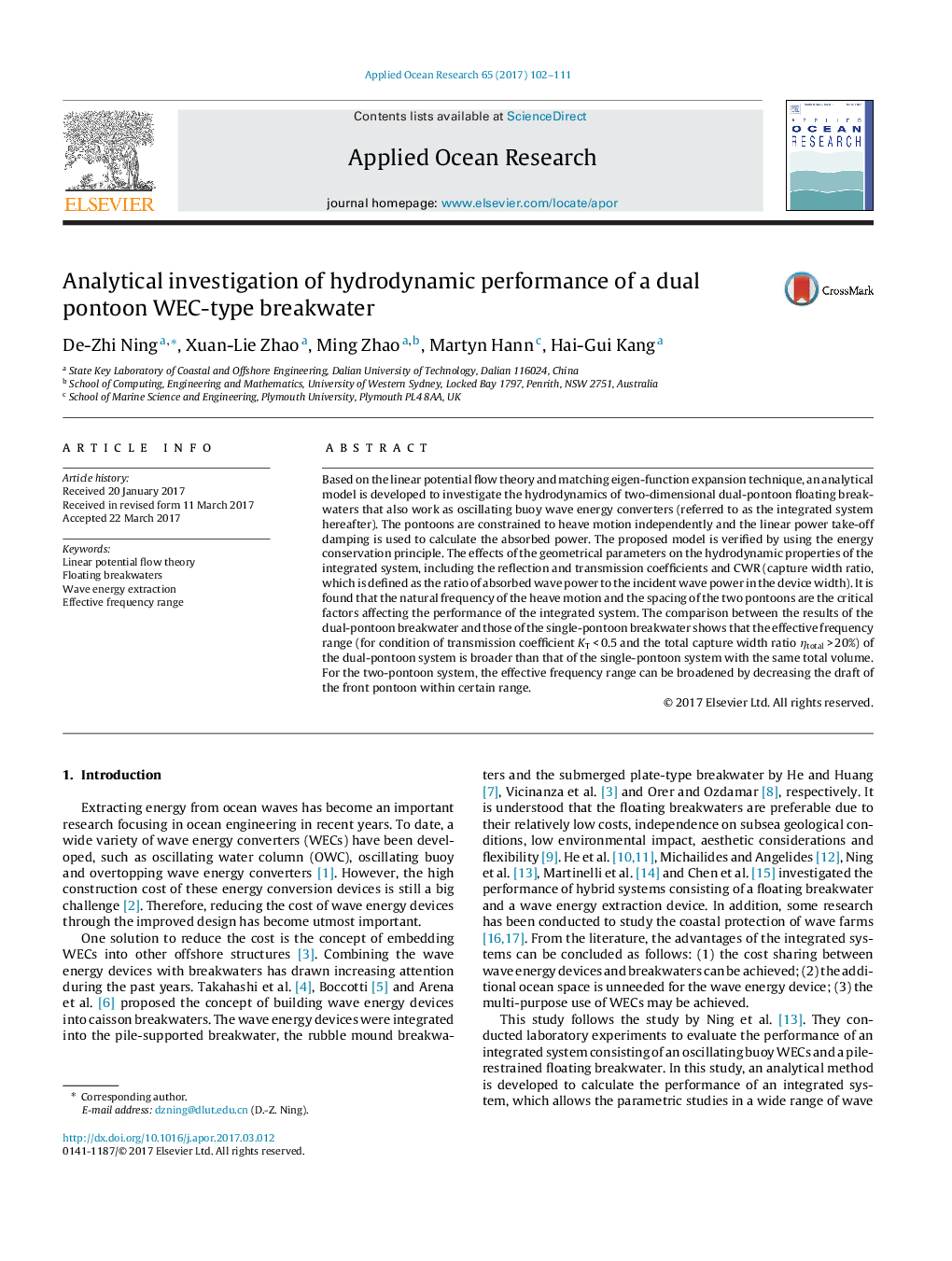| Article ID | Journal | Published Year | Pages | File Type |
|---|---|---|---|---|
| 5473303 | Applied Ocean Research | 2017 | 10 Pages |
Abstract
Based on the linear potential flow theory and matching eigen-function expansion technique, an analytical model is developed to investigate the hydrodynamics of two-dimensional dual-pontoon floating breakwaters that also work as oscillating buoy wave energy converters (referred to as the integrated system hereafter). The pontoons are constrained to heave motion independently and the linear power take-off damping is used to calculate the absorbed power. The proposed model is verified by using the energy conservation principle. The effects of the geometrical parameters on the hydrodynamic properties of the integrated system, including the reflection and transmission coefficients and CWR (capture width ratio, which is defined as the ratio of absorbed wave power to the incident wave power in the device width). It is found that the natural frequency of the heave motion and the spacing of the two pontoons are the critical factors affecting the performance of the integrated system. The comparison between the results of the dual-pontoon breakwater and those of the single-pontoon breakwater shows that the effective frequency range (for condition of transmission coefficient KT < 0.5 and the total capture width ratio ηtotal > 20%) of the dual-pontoon system is broader than that of the single-pontoon system with the same total volume. For the two-pontoon system, the effective frequency range can be broadened by decreasing the draft of the front pontoon within certain range.
Related Topics
Physical Sciences and Engineering
Engineering
Ocean Engineering
Authors
De-Zhi Ning, Xuan-Lie Zhao, Ming Zhao, Martyn Hann, Hai-Gui Kang,
